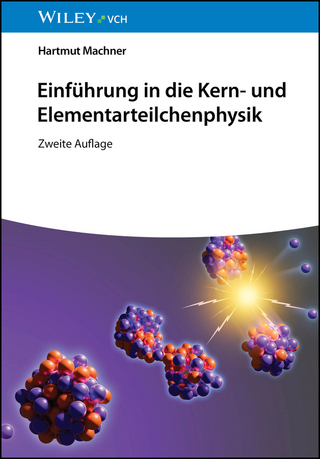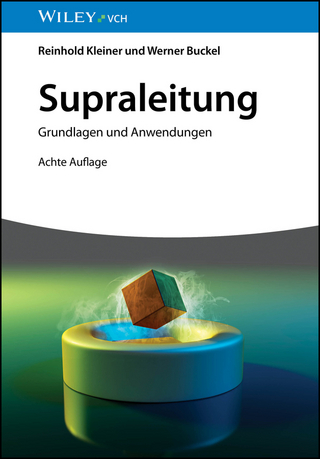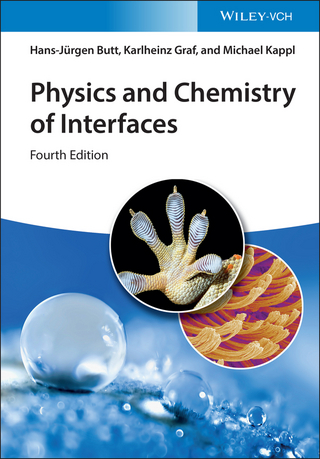
Electron Spin Relaxation in Liquids
Kluwer Academic/Plenum Publishers (Verlag)
978-0-306-30588-7 (ISBN)
- Titel ist leider vergriffen;
keine Neuauflage - Artikel merken
No single volume can be exhaustive, but we believe that the contri- butions to this volume are sufficiently broad to show how those who are concerned with spin relaxation problems think about the subject and circumvent, or expose, its difficulties. The first few Chapters (I-V) review the basic quantum mechani- cal and statistical manipulations which are often used.
I. Superoperators, Time-Ordering, and Density Operators.- Superoperators.- Time-ordering.- Density operators.- II. Stochastic Processes.- Stochastic (random) variables and probability.- General remarks on stochastic (random) processes.- The relaxation function.- Gaussian and Markov processes.- The relaxation function.- Gaussian and Markov processes.- Master equation.- Fokker-Planck equation.- Functional integration technique of Kac.- III. An Introduction to the Stochastic Theory of E.S.R. Line Shapes.- The jump model.- The isotropic rotational diffusion model.- IV. Projection Operators.- "Non-Markoffian" master equation.- Application to the interaction between a spin system and a bath.- The Redfield approximation.- The two jump models.- V. Cumulant Expansion.- One-dimensional moment and cumulant expansions.- Multivariable moment and cumulant expansions.- Expansions.- Generalization.- Conclusion.- VI. Linear Response Theory and Spin Rotation.- Spin relaxation.- Derivation of the Bloch equations.- Concluding remarks.- VII. Two Approaches to the Theory of Spin Relaxation: I. The Redfield-Langevin Equation II. The Multiple Time Scale Method.- The Redfield-Langevin equation.- Motivation.- Derivation of the equation of motion for G??, (t).- The Redfield-Langevin equation - the lowest order result.- Stochastic properties of the Redfield-Langevin eq..- The Bloch-Langevin equation.- Further remarks.- Generalizations of the lowest order result.- Semiclassical treatment.- Further stochastic interpretation of the spin problem.- The multiple time scale method.- Derivation of the equations of motion.- VIII. ESR Relaxation and Line Shapes from the Generalized Cumulant and Relaxation Matrix Viewpoint.- General approach.- Relaxation matrix and spectral lineshapes.- Properties of the relaxation matrix.- Non-asymptotic solutions.- Stochastic averaging.- Gaussian processes.- Markov processes.- Diffusion models.- Internal rotations.- Anisotropic rotational diffusion.- Summation of the generalized moments for a Markoff process: stochastic Liouville equation.- IX. Spin Relaxation via Quantum Molecular Systems.- Strong collisional relaxation.- General formulation.- Applications.- Gas-phase relaxation.- Quantum effects of methyl group tunneling.- Spin relaxation via vibronic relaxation.- Non-resonant effects.- X. Electron Spin Relaxation in Liquids. Selcted Topics.- Hamiltonian: terms which determine frequencies.- Hamiltonian: terms which determine relaxation.- Complete hamiltonian and density matrix.- Time-dependent perturbation expansions.- $${/rm{/mathord{/buildrel{/lower3pt/hbox{$/scriptscriptstyle/rightharpoonup$}}/over M} }}$$(t) related to '$${/rm{/mathord{/buildrel{/lower3pt/hbox{$/scriptscriptstyle/rightharpoonup$}}/over S} }}$$(t)$${/rm{/mathord{/buildrel{/lower3pt/hbox{$/scriptscriptstyle/rightharpoonup$}}/over S} }}$$'; pulse experiments.- Line widths: cw experiments.- Spin autocorrelation function.- Line shapes in absence of relaxation 251 Line widths and reorientation: detailed derivation.- Discussion of results.- Analysis of experiments.- Second order corrections.- Several interacting nuclei.- Breakdown of spin-hamiltonian; Orbach processes.- Appendices.- XI. Spin-Rotation Interaction.- Basic theory of the interaction.- The full relaxation problem.- The dynamical problem.- Appendices.- 3j-symbols.- Spherical tensors.- Rotation matrices.- XII. Electron Spin Relaxation in 6S State Ions.- Adaption of Redfield's theory.- Relaxation via rotational modulation of the zero-field splitting.- Relaxation via the quartic terms.- Collisional fluctuations of the zero-field splitting.- Modifications demanded by a hyperfine interaction.- Symmetric linewidth variations in the spectra of manganese(II) ions.- XIII. Magnetic Resonance Line Shapes in Slowly Tumbling Molecules.- Expressions for the line shapes.- Reduction to algebraic equations.- Computational algorithms.- Reduction to an eigenvalue problem.- Reduction of band-width to tridiagonal 356 Diagonalization of a complex symmetric tridiagonal matrix.- Estimating rates of convergence.- Applications and comparison with experiments.- Diagonalization programs.- XIIIA. Appendix: Symmetry and the Slowly Tumbling Spin System.- Application of group theory.- XIV. ESR Line Shapes and Saturation in the Slow Motional Region - The Stochastic Liouville Approach.- General approach.- Free radicals of S=$${1 /over 2}$$; no saturation.- Axially symmetric secular g-tensor.- Asymmetric secular g-tensor.- g-tensor plus END-tensor including pseudosecular terms.- One nuclear spin of I = 1.- Saturation.- Rotationally invariant T1.- g-tensor (axially symmetric).- Triplets.- General solutions.- Perturbation theory.- Summary of spectra.- XV. Electron Spin Relaxation in Liquid Crystals.- Nematic liquid crystals.- The static spin hamiltonian.- The linewidth calculation.- The line shape.- XVI. Two Problems Involving ESR in Liquid Crystals.- Thin film ESR (rapid tumbling).- Slow tumbling ESR of a free radical in a bulk liquid crystal.- XVII. The ESR Line Shape of Triplet Excitons in Disordered Systems: The Anderson Theory Approach.- The static line shape.- The magneto-selection theory.- Line shape and symmetry of the triplet state.- The magneto-photo-selection.- The incoherent exciton line shape.- The experimental problem.- The single-channel transfer model.- The exciton line shape of a trimer.- The secular approximation.- The adiabatic approximation.- A line shape formula for the general case.- Simulation of the experimental data.- Excitons in thermal equilibrium.- The multi-channel transfer model.- The vibronic coupling approach of the exciton.- The coherent exciton states.- The incoherent exciton states.- The factors controlling the exciton diffusion.- XVIII. ESR Saturation and Double Resonance in Liquids.- to saturation: a simple line.- ELDOR.- ENDOR.- General approach.- Transition probabilities.- ELDOR - Generalized no saturation of observing mode.- ENDOR - Limiting enhancements.- Expressions for transition probabilities.- Heisenberg spin exchange and chemical exchange.
| Zusatzinfo | 1 black & white illustrations, biography |
|---|---|
| Sprache | englisch |
| Maße | 160 x 250 mm |
| Themenwelt | Naturwissenschaften ► Physik / Astronomie ► Atom- / Kern- / Molekularphysik |
| Naturwissenschaften ► Physik / Astronomie ► Elektrodynamik | |
| ISBN-10 | 0-306-30588-7 / 0306305887 |
| ISBN-13 | 978-0-306-30588-7 / 9780306305887 |
| Zustand | Neuware |
| Informationen gemäß Produktsicherheitsverordnung (GPSR) | |
| Haben Sie eine Frage zum Produkt? |
aus dem Bereich


